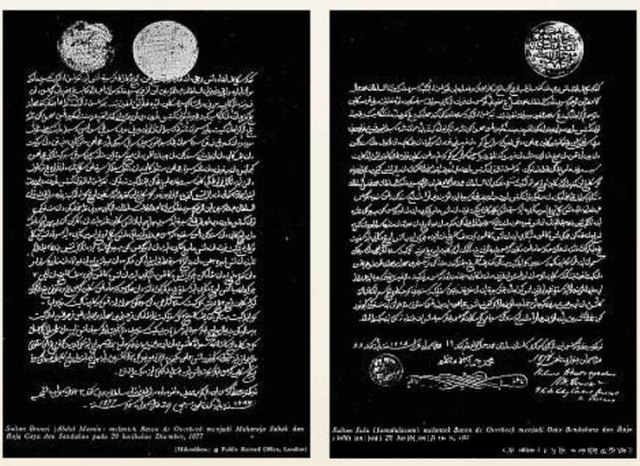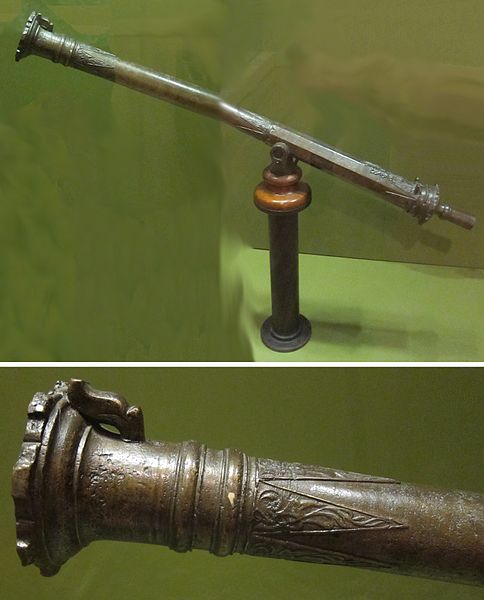Muedzul Lail Tan Kiram is the head of the Royal House of Sulu, a position which he has held since 16 February 1986. As the eldest son of the former Sultan Mohammad Mahakuttah Abdulla Kiram, he is the legitimate heir claimant to the throne of the Sultanate of Sulu. He is a pretender to the throne as the 35th Sultan of Sulu.
Kiram in 2016
The Sultanate of Sulu was a Sunni Muslim state that ruled the Sulu Archipelago, coastal areas of Zamboanga City and certain portions of Palawan in the today's Philippines, alongside parts of present-day Sabah, North and East Kalimantan in north-eastern Borneo.
(Left) The first concession treaty was signed by Sultan Abdul Momin of Brunei on 29 December 1877, appointing Baron de Overbeck as the Maharaja Sabah, Rajah Gaya and Sandakan. (Right) The second concession treaty was signed by Sultan Jamal ul-Azam of Sulu on 22 January 1878 also appointing Baron de Overbeck as Dato Bendahara and Raja Sandakan, approximately three weeks after signature of the first treaty.
Datu Amil (sitting left), an influential leader of the Tausūgs in discussion with Captain W.O. Reed, US 6th Cavalry Regiment during the American Moro Campaigns. Amil was later killed by the Americans which marking the starting end of the sovereignty of the Sulu Sultanate when the Americans relinquished their powers until the end of the last battle with the Moros in which their region fell under the American rules.

Darul Jambangan (Palace of Flowers) in Maimbung, Sulu before it was destroyed by a typhoon in 1932. It used to be the largest royal palace built in the Philippines. A campaign to faithfully re-establish it in Maimbung town has been ongoing since 1933. A very small replica of the palace was made in a nearby town in the 2010s, but it was noted that the replica does not mean that the campaign to reconstruct the palace in Maimbung has stopped as the replica does not manifest the true essence of a Sulu royal palace. In 2013, Maimbung was officially designated as the royal capital of the Sultanate of Sulu by the remaining members of the Sulu royal family. Almost all Sulu royals who have died since the 19th century up to the present have been buried around the palace grounds.
A Moro brass lantaka or swivel gun.





